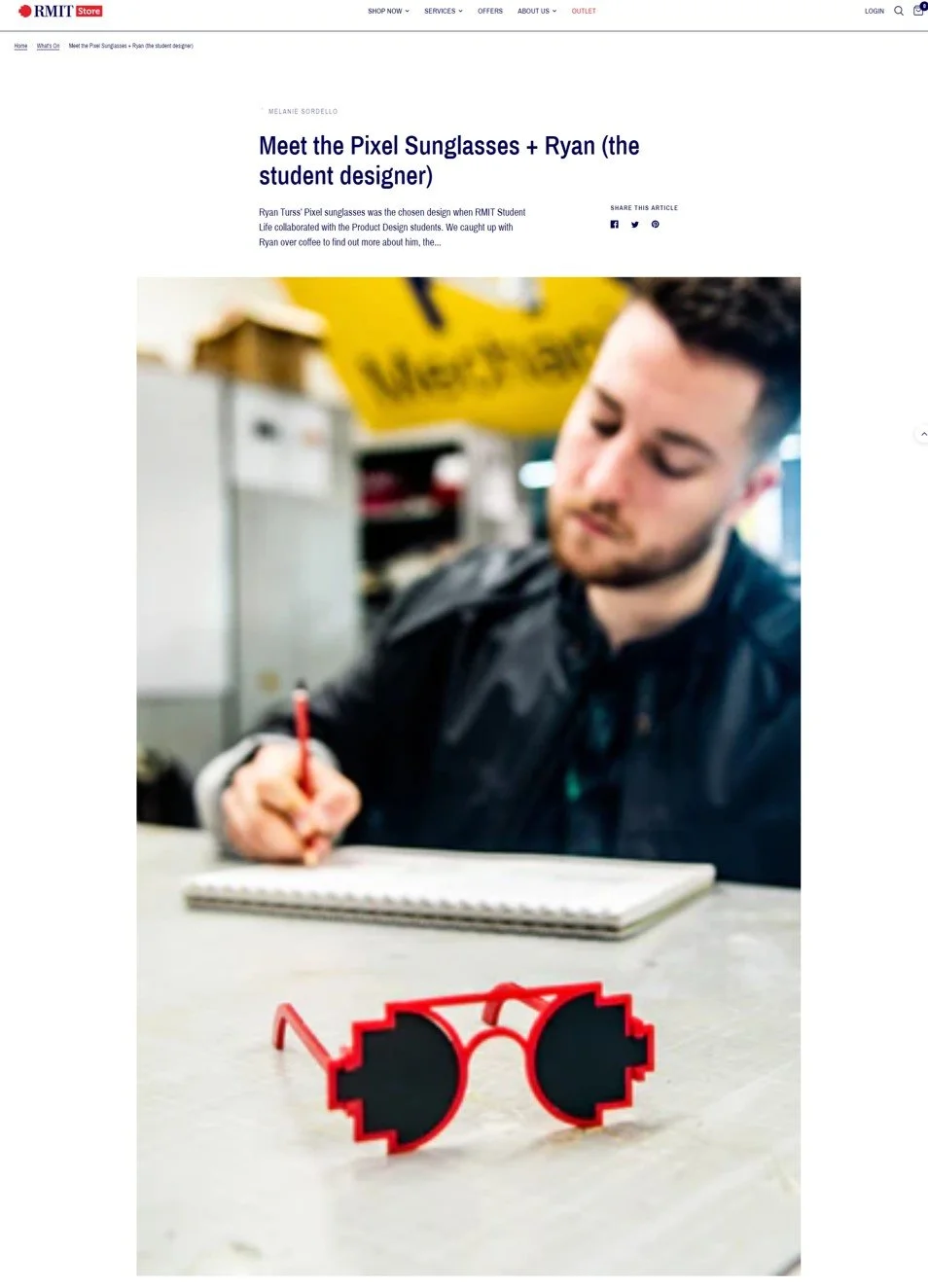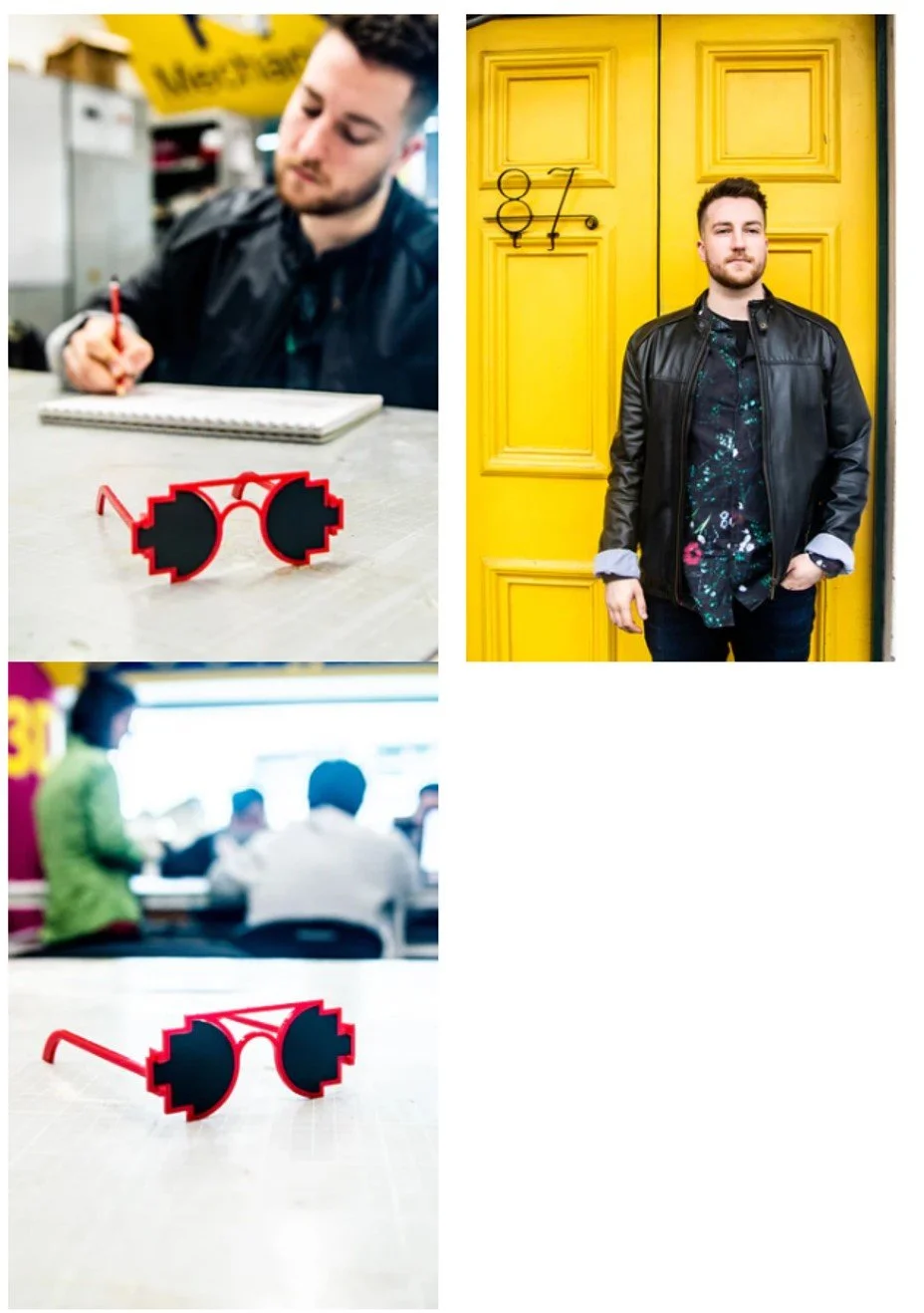The RMIT Pixel Sunglasses, which I developed three years ago, marked my first foray into the world of Product Design, and what a memorable experience it was. From the initial concept to the final product hitting the shelves, every step of the journey felt like a dream come true. I couldn’t have been happier to see my vision materialise into a tangible product that resonated with so many people.
Winning the tender for this project not only validated my creative ideas but also opened doors to real-world design challenges. I had to balance aesthetics with practicality, ensuring that the sunglasses were not only visually appealing but also functional and comfortable to wear. Working closely with manufacturers to perfect the design for mass production was an invaluable learning curve. It taught me the importance of precise measurements, material selection, and effective communication with suppliers to achieve a high-quality end product.
Seeing the sunglasses sell so quickly at the RMIT Campus Store was a rewarding moment, as it confirmed that there was real demand for my design. This experience set the foundation for my career in product design, reinforcing my passion for creating products that are both innovative and user-friendly. It remains a milestone in my journey, reminding me of why I ventured into this industry in the first place—to bring creative ideas to life and make a meaningful impact through design. I think good design elevates us a little. and i hope this product achieved just that.
I will be forever grateful to RMIT for supporting their students as much as they did.
Available at RMIT website -https://store.rmit.edu.au/products/pixel-sunglasses?srsltid=AfmBOooUwZbx56KRfKPIr71l7lN0ZfmSgQ9VO1dTvTGhDKdF8T-eHtSI









